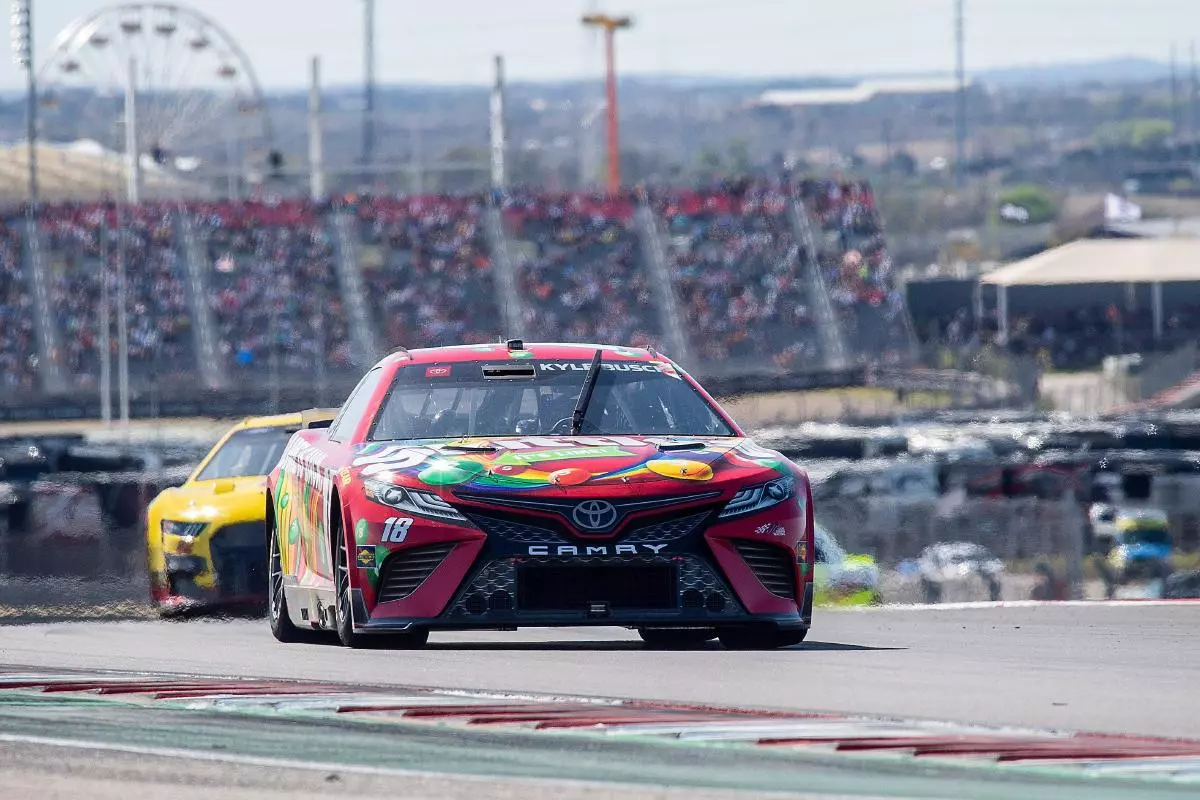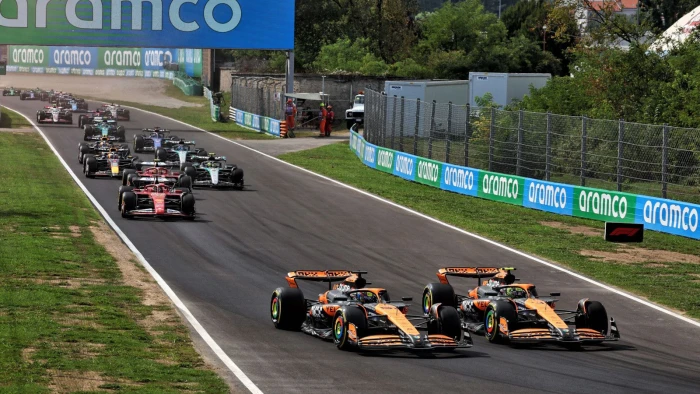NASCAR: The magic, and simplicity, of the green-white-checker

Kyle Busch at Echopark Automotive Grand Prix, Texas
Last season the racing series that bills itself the 'pinnacle of motor racing' ended in chaos and controversy that denied one driver a slice of history and tainted another's first F1 title.
It all could have been avoided had Formula 1 used NASCAR's green-white-checker flag rule.
The 2021 Formula 1 World Championship went from a fight to a farce as, determined not to finish the race and have the championship title decided behind a Safety Car, the Race Director made the controversial - and subsequently declared illegal although not in so many words - call to allow only some cars to unlap themselves in order to get the race restarted.
Lewis Hamilton lost out on a record-breaking eighth world title while Max Verstappen's first will always carry whispers that it was gifted to him.
Planet Sport explains how NASCAR's simple two-lap overtime means every race ends with actual racing.
History of the green-white-checker
NASCAR, however you feel about the 'rubbing is racing' series, will never face such a dilemma as it has the overtime rule, the green-white-checker.
Although throughout most of its history NASCAR races only went the advertised distance, in 2004 the sport decided to implement the overtime rule across all three of its divisions.
They did so in part after fans revolted at the 2002 Pepsi 400, throwing beer bottles, seat cushions, and pretty much whatever they could get their hands on when the race finished under yellow.
With four laps to go, the race had its ninth caution of the day when Ryan Newman, Jeff Green and Dave Blaney crashed on the back straight.
NASCAR opted to end the race under caution with Michael Waltrip taking the win ahead of Rusty Wallace, and the fans expressed their anger - and that wasn't even a manipulated result such as F1's 2021 Abu Dhabi race.
NASCAR then tried a red flag rule where the last red could be no fewer than five laps from the end, anything after that was a caution and the field was frozen.
But again fans showed their frustration, this time at the 2004 Aaron's 499 at Talladega where Jeff Gordon beat Dale Earnhardt Jr because of that caution. Again bottles, chairs and rubbish was thrown onto the track.
That prompted another rethink and the green-white-checker was implemented mid-2004 across all the NASCAR series.
How does the green-white-checker work?
Simply put, the green-white-checker relates to the flags in the race. Green means go, white means the final lap and the checker means the end.
Should there be a caution near the end of the race, or even a red, the race will always have two laps in which to be completed - even if that means going over the prescribed distance.
The drivers will be shown the green for the penultimate lap and the white for the last one with the checker flag ending the race.
However, should there be a crash on the green flag lap before the overtime line has been reached by the race leader, they'll go back to another restart of green-white-checker.
If the crash happens on the white lap, well the race leaders - unless they are the ones crashing - are already ahead of that one.
It means no race ever ends under a caution, or in F1 terms under the Safety Car. There are no processional finishes, the winner is the first driver to take the checkered flag in racing conditions.
And, more to the point in this lesson for Formula 1, there is no scope for one man to erroneously decide a World title.

